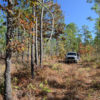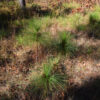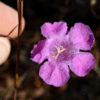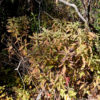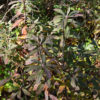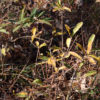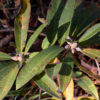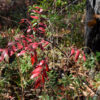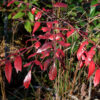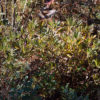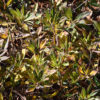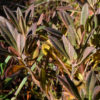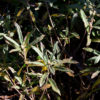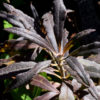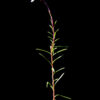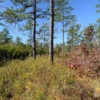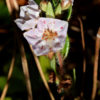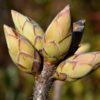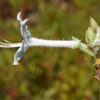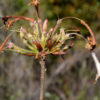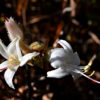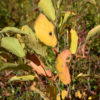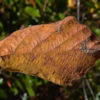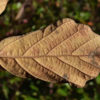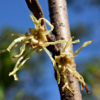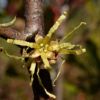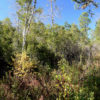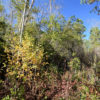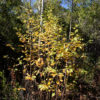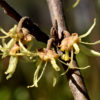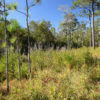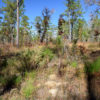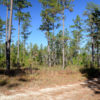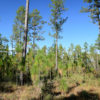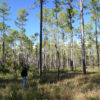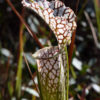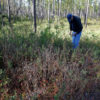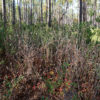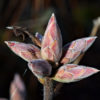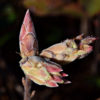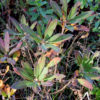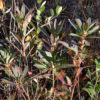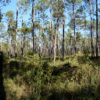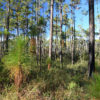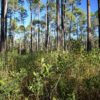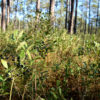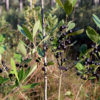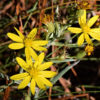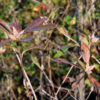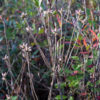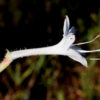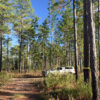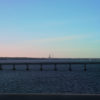What is a bayhead? The word is composed of the English words “bay” for laurel (or other evergreens) and “head” for the beginning (tip/head/top) of a river course. The more or less flat landscape caves in a bit here at first. Small watercourses fed by springs flow through these depressions or ditches. Downstream, these ditches become deeper and wider and the creek becomes larger and larger. A real valley is formed. Because of the high humidity in these ditches, the woody plants here (in contrast to the higher and drier areas around the valleys) stay always green all the time or at least much longer. The association with the always green laurel or bay comes from this fact, even if there is none growing there at all. “Bay” is also a name given to other evergreen plants in the U.S., such as rosebay (R. maximum). In the event of a fire, which is naturally started by lightning during drier periods, the brush fire travels through the higher, drier areas, fueled by the then very dry and highly combustible wiregrass (Aristida stricta) that grows abundantly there. Thus, all woody plants there burn except for the very fire-resistant Pinus palustris. Fire does not find food on the plants in the bayhead itself. The much moister and greener plants in the bayhead cannot serve as fuel for the fire. Thus, the fire comes to a stop at the bayhead edge. Since the woody plants in the bayhead never burn down, they can grow much larger there, and even completely different woody species can thrive. By this completely different habitats are created in a completely natural way. They lie directly next to each other and seem to be demarcated from each other as if a line was drawn with a ruler.
Today we first went to Wolfe Creek Bayhead and were surprised how many R. viscosum var. aemulans showed a few flowers. However, they were not always well developed. The species is found only in the Pinus palustris-covered areas outside the bayheads, where vegetation is regularly burned down every few years, either intentionally or by lightning. Only Pinus palustris continues to grow unperturbed after fire. R. viscosum var. aemulans is destroyed above ground, but quickly resprouts from the base of the plant and from numerous runners and may bloom again as soon as one to two years after a fire. On the edge of the Bayhead, in an already wetter zone that is hardly affected by fire, R. canescens thrives. At least two clones of R. csanescens also grow here in the area that gets a regular burning. These have apparently adapted by forming abundant runners, something R. canescens does not usually do in Florida. One of the clones had interesting narrow leaves. We also found a specimen of R. austrinum in this same area today.
Afterwards we drove to the Dunn Branch Bayhead, which is a bit further north. Here, too, there were masses of R. viscosum var. aemulans on the regularly burned areas outside the bayhead. In one place we even found it in the bayhead, which was still quite shallow there. Here the plants grew to man-size and some terminal shoots had as many as 10 flower buds! R. canescens was also found, but as usual only in or at the edge of the bayhead.


